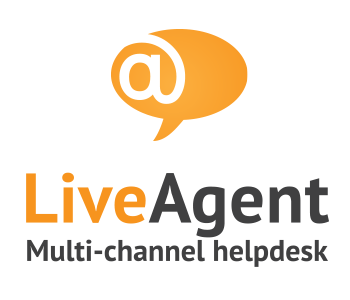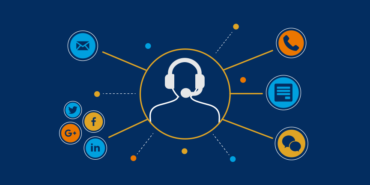In the dynamic business environment of 2024, customer service experience is a critical differentiator that can significantly impact an organization's success.
Home » Customer Support Software
Customer Support Software
Are you tired of struggling with inefficient customer support processes? Look no further than our cutting-edge customer support software! This all-in-one solution will revolutionize the way you interact with your customers. With features like streamlined ticketing, real-time chat, and detailed reporting, you'll be able to provide lightning-fast, personalized support that keeps your customers coming back. Don't settle for subpar tools that leave your team (and your customers) frustrated. Invest in a customer support platform designed to drive satisfaction and boost your bottom line. Try our software today and experience the difference world-class support can make!
List of the Customer Support Software

Zendesk Suite
Zendesk's customer service solution to build the best customer experience
Zendesk Suite is the customer service solution that is easy to use and scales with your business. On average, companies using Zendesk increase customer satisfaction by 25% and agent productivity by 30% - at any scale. Your customer interactions live in a single interface with features like web widgets, pre-defined ticket responses, and more. Get set up and run quickly. Zendesk Suite includes Ticketing System, Help Center, Community Forum, Messaging, Talk, Explore, and Sunshine Conversations.
- CRM Software
- Knowledge Base Management
- Live Chat Software
- Email Management Software
- Service level Aggrement
EngageBay is a simple, powerful, all-in-one marketing, sales and service automation software with free CRM for startups and growing businesses. EngageBay helps you automate your marketing, sales and support by combining lead generation, email marketing, marketing automation, CRM & social media engagement, helpdesk, and ticketing.
- CRM Software
- Customer Engagement Software
- Email Management
- Live chat Software
- Knowledge Base Management
- Support Ticket Management
- Service Level Aggrement
Intercom is the only complete AI-first customer service platform, enhancing the customer experience, improving operational efficiency, and scaling with your business every step of the way. Our AI-first platform is built on a single AI system, with three major components that will allow you to deliver the remarkable customer service you’ve spent decades striving for: AI Agent: Customers no longer wait or get deflected. AI Chatbot provides instant accurate, responses, 24/7 to most questions. Only complex interactions transition to tickets. AI Copilot: Agents no longer manually, slowly look things up. AI Copilot is ever-present, connected to all data and systems, and provides information in real time. Instant ramp time for new agents, and agents needing to know new things. AI Analyst (Coming soon): Leaders no longer manually compile reports without full coverage. AI Insights proactively provides a holistic view across 100% of conversations, with clear suggested areas of improvement.
- CRM Software
- Knowledge Base Management
- Live Chat Software
- Email Management Software
- Service level Aggrement

TeamSupport
Supercharge your service desk with secure access
TeamSupport is the premier ticketing and live chat solution designed for support teams looking to improve customer engagement and make agents’ lives easier. Our intuitive, AI-powered platform allows teams to spend less time on manual tasks and more time building stronger relationships with customers. TeamSupport allows agents to connect relevant teams, access valuable customer insights, and solve complex issues with less time and effort which ultimately improves customer satisfaction.
- CRM Software
- Knowledge Base Management
- Live Chat Software
- Email Management Software
- Service level Aggrement
LiveAgent is a cloud-based Customer Support Software with over 200 integrations. Streamline all customer interactions and manage them from a single shared company inbox. Use all your social media channels, and enjoy superior ticket management, shared inboxes, live chat software, and other advanced features. LiveAgent delivers the best customer experience to 150M end-users worldwide. Start with a 1 month free trial, no credit card required.
- CRM Software
- Knowledge Base Management
- Live Chat Software
- Email Management Software
- Service level Aggrement
Latest Trends Related to Customer Support Software
The Future of Help Desk Software: Trends to Watch in 2024
As businesses increasingly prioritize customer experience, help desk software continues to evolve to meet the demands of modern consumers and support teams. In
Importance of help desk software
Help desk software plays a crucial role in modern business operations by streamlining customer support and enhancing overall efficiency. Here are some key reas
Top Tips for Building a Flourishing Help Center
A flourishing help center is a vital component of a successful customer support strategy. It not only enhances user satisfaction but also reduces the workload
Customer Support Software Guide
Essential Customer Support software buying information
When purchasing customer support software, it's crucial to evaluate various factors to ensure the solution meets your business needs. Here’s a guide to help you make an informed decision:
1. Understand Your Needs
- Business Size & Industry: Choose software that caters to your business size and industry-specific requirements. Small businesses might prefer simple solutions, while larger enterprises may need more complex systems.
- Support Channels: Identify the channels (e.g., email, live chat, social media, phone) you need to support your customers effectively.
- Scalability: Ensure the software can scale with your business as it grows, offering more advanced features or additional support as needed.
2. Key Features to Look For
- Multi-Channel Support: Ability to manage customer interactions across various channels from a single platform.
- Ticketing System: An organized way to track, manage, and resolve customer issues.
- Automation: Automated workflows, ticket routing, and canned responses to save time and reduce repetitive tasks.
- Knowledge Base & Self-Service: Tools to create a knowledge base where customers can find answers to common questions on their own.
- Analytics & Reporting: Insights into customer interactions, team performance, and areas for improvement.
- Integration Capabilities: Compatibility with other tools your business uses, such as CRM systems, marketing automation tools, or e-commerce platforms.
- Customization: Ability to tailor the software to your specific workflows and branding.
3. User Experience
- Ease of Use: The software should be intuitive and easy to use for your team.
- Mobile Access: Availability of mobile apps for support on the go.
- Customer Experience: Evaluate how easy it is for your customers to interact with the support platform.
4. Pricing Structure
- Cost per User: Understand the pricing model—whether it's based on the number of users, features, or interactions.
- Subscription Model: Monthly vs. annual pricing and the potential for discounts with long-term commitments.
- Additional Costs: Look out for any hidden fees, such as those for extra features, integrations, or support.
5. Security and Compliance
- Data Protection: Ensure the software complies with data protection regulations such as GDPR, CCPA, etc.
- Security Features: Encryption, two-factor authentication, and other security measures to protect customer data.
- Uptime & Reliability: A strong track record of uptime and performance to ensure your support is always available.
6. Support and Onboarding
- Training & Resources: Availability of training materials, webinars, and onboarding support to help your team get up to speed.
- Customer Support: The level of support provided by the vendor, including availability (24/7, business hours) and support channels (email, chat, phone).
- Community & Documentation: An active community and comprehensive documentation can be invaluable for troubleshooting and learning.
7. Vendor Reputation and Reviews
- Track Record: Research the vendor’s reputation, customer testimonials, and industry recognition.
- User Reviews: Look for reviews on platforms like G2, Capterra, or Trustpilot to get a sense of customer satisfaction.
8. Trial Period
- Free Trial: Most vendors offer a trial period or a freemium version. Use this time to test the software’s features and performance in a real-world scenario.
- Pilot Testing: Implement the software with a small team to assess its impact before a full rollout.
9. Future-proofing
- Product Roadmap: Check if the vendor has a clear roadmap for future updates and feature enhancements.
- Innovation: Consider whether the software includes or plans to include AI, machine learning, or other emerging technologies to stay competitive.
10. Return on Investment (ROI)
- Efficiency Gains: Calculate the potential efficiency improvements and time savings the software could bring.
- Customer Satisfaction: Assess how the software could improve customer satisfaction and loyalty, which directly impacts revenue.
By thoroughly evaluating these factors, you can choose a customer support software solution that aligns with your business objectives and provides a solid foundation for exceptional customer service.
What is customer support software?
Customer support software is a tool or platform that businesses use to manage and streamline interactions with their customers. It helps companies handle customer inquiries, issues, and feedback more efficiently and effectively across various communication channels such as email, live chat, social media, and phone.
Key Functions of Customer Support Software:
Ticketing System: This is the core of most customer support software. It converts customer queries into "tickets," which can be tracked, managed, and resolved by the support team. Each ticket is assigned a unique ID and can be prioritized, categorized, and assigned to the appropriate team member.
Multi-Channel Support: The software allows businesses to support customers through multiple channels—email, chat, phone, social media, and sometimes even SMS—from a single platform, ensuring a seamless experience.
Knowledge Base: Many customer support software solutions include a knowledge base or self-service portal where customers can find answers to common questions, reducing the volume of inquiries and empowering customers to resolve issues on their own.
Automation: Features like automated ticket routing, canned responses, and workflow automation help reduce manual tasks, improve response times, and ensure consistent service.
Customer Relationship Management (CRM) Integration: Integration with CRM systems allows support teams to access customer information, history, and preferences, enabling more personalized and effective support.
Reporting and Analytics: Customer support software typically includes tools to analyze and report on various metrics, such as response times, resolution rates, customer satisfaction scores, and agent performance.
Live Chat: Many solutions offer live chat features, allowing real-time interaction with customers. This can be particularly useful for providing immediate support and resolving issues quickly.
Collaboration Tools: Features that enable internal communication and collaboration within the support team, such as shared inboxes, internal notes, and team chat, are often included.
Customer Feedback: Some platforms include tools for gathering customer feedback through surveys or satisfaction ratings, which can be used to improve service quality.
Benefits of Using Customer Support Software:
- Improved Efficiency: By organizing and automating support processes, the software helps teams handle a larger volume of inquiries more efficiently.
- Better Customer Experience: Faster response times, consistent service, and the ability to support customers on their preferred channels enhance the overall customer experience.
- Data-Driven Decisions: Access to detailed analytics and reporting helps businesses understand trends, identify areas for improvement, and make informed decisions.
- Scalability: As a business grows, customer support software can scale to handle increased demand without sacrificing service quality.
- Team Collaboration: It facilitates better communication and collaboration within the support team, leading to quicker resolutions and more cohesive service.
Examples of Customer Support Software:
- Zendesk
- Freshdesk
- Help Scout
- Zoho Desk
- Salesforce Service Cloud
- Intercom
Customer support software is an essential tool for businesses of all sizes, helping them provide efficient, high-quality service that meets customer expectations.
Customer support software pricing
Customer support software pricing varies widely depending on the features offered, the number of users, and the specific needs of the business. Here’s a breakdown of common pricing models and what to expect:
1. Per User, Per Month Pricing
- Basic Plans: Typically range from $10 to $30 per user/month. These plans generally include essential features like ticketing, basic reporting, and email support.
- Standard Plans: Mid-tier plans cost around $30 to $70 per user/month and often include additional features like multi-channel support (e.g., live chat, social media), advanced automation, and integrations with other software.
- Premium Plans: Advanced plans can range from $70 to $150+ per user/month. These plans usually offer all available features, including advanced analytics, AI-powered tools, extensive customization, and priority support.
2. Tiered Pricing
- Some customer support software offers tiered pricing based on feature access rather than user count. For example:
- Free Tier: Basic features with limited users or functionality.
- Professional Tier: More advanced features, additional users, and support options.
- Enterprise Tier: Full access to all features, unlimited users, and premium support, typically priced on a case-by-case basis depending on the organization’s size and needs.
3. Flat-Rate Pricing
- Small Teams: A flat monthly fee (e.g., $50 to $200/month) covers a set number of users and includes a core set of features.
- Larger Organizations: Higher flat fees (e.g., $500 to $2,000+/month) for more comprehensive feature sets, more users, or enterprise-grade support.
4. Pay-As-You-Go
- Some software offers pay-as-you-go models, charging based on usage rather than a fixed monthly fee. This could include charges per ticket resolved, per interaction, or for specific features (e.g., SMS notifications, AI bots).
5. Add-On Pricing
- Feature Add-Ons: Certain features like advanced analytics, AI, additional support channels (e.g., voice support), or additional storage may come at an extra cost.
- Premium Support: Enhanced support options, such as 24/7 phone support or a dedicated account manager, might be offered as add-ons for an additional fee.
6. Annual vs. Monthly Billing
- Annual Billing: Most vendors offer discounts (typically 10-20%) for annual commitments. This can be a cost-saving option if you’re willing to commit for a year.
- Monthly Billing: Offers flexibility but often comes at a slightly higher per-month rate compared to annual billing.
7. Free and Freemium Plans
- Free Plans: Some software offers free versions with limited features, ideal for small teams or businesses just starting out.
- Freemium: Basic functionality is free, but more advanced features or increased limits (like more users or channels) require a paid upgrade.
8. Enterprise Pricing
- Custom Pricing: For large organizations, pricing is often customized based on specific needs, the number of users, and required integrations. Enterprise plans typically include advanced security, compliance features, and tailored support options.
Examples of Pricing for Popular Customer Support Software:
- Zendesk: Plans start at $19 per agent/month for basic features and go up to $99 per agent/month for more advanced capabilities. Enterprise plans are custom-priced.
- Freshdesk: Offers a free plan, with paid plans starting at $15 per agent/month for basic features and up to $79 per agent/month for advanced features.
- Help Scout: Pricing starts at $20 per user/month with more advanced plans up to $65 per user/month.
- Zoho Desk: Starts at $14 per agent/month for the standard plan, with professional and enterprise plans at $23 and $40 per agent/month respectively.
Additional Considerations:
- Free Trials: Most vendors offer a free trial period (usually 14 to 30 days) to test the software before committing.
- Scaling Costs: Consider how costs will scale as your team or customer base grows. Look for volume discounts or the ability to add users as needed without a significant cost increase.
By carefully comparing pricing models and what’s included in each tier, you can find a customer support software solution that fits your budget and meets your business needs.
Customer support software features rated by users
1. Ticketing System
- User Ratings: Highly rated for efficiency and organization.
- What Users Value: The ability to track, categorize, prioritize, and manage customer inquiries effectively. Features like automated ticket routing and easy ticket assignment are particularly appreciated.
2. Multi-Channel Support
- User Ratings: Rated highly when the software integrates multiple communication channels (e.g., email, chat, social media) into a single interface.
- What Users Value: Seamless handling of customer interactions across different channels without losing context. Users favor solutions that offer real-time updates and easy switching between channels.
3. Automation & Workflow Management
- User Ratings: Highly rated for saving time and reducing repetitive tasks.
- What Users Value: Automation rules, macros, and canned responses that streamline workflows. Users appreciate the ability to automate routine tasks like ticket categorization and response templates, which enhances productivity.
4. Knowledge Base & Self-Service Portal
- User Ratings: Positively rated for reducing support ticket volume and empowering customers.
- What Users Value: Easy-to-use content management tools for creating and maintaining a comprehensive knowledge base. Users appreciate when customers can find answers independently, reducing the need for direct support.
5. Reporting & Analytics
- User Ratings: Highly rated for providing insights into team performance and customer behavior.
- What Users Value: Detailed, customizable reports that help monitor key metrics like response times, ticket resolution rates, and customer satisfaction. Users prefer software that offers both pre-built and customizable reports.
6. Integration Capabilities
- User Ratings: Rated highly when the software integrates well with other business tools.
- What Users Value: Seamless integration with CRM systems, e-commerce platforms, and other third-party tools. Users appreciate easy data synchronization and the ability to pull customer information directly into the support platform.
7. Ease of Use
- User Ratings: Consistently rated as one of the most important features.
- What Users Value: A user-friendly interface that is easy to navigate, with minimal training required. Users value intuitive design, straightforward workflows, and the ability to quickly onboard new team members.
8. Customization Options
- User Ratings: Highly rated for allowing businesses to tailor the software to their specific needs.
- What Users Value: The ability to customize fields, ticket forms, workflows, and dashboards to fit their unique processes. Users appreciate when software is flexible enough to adapt to their business rather than forcing them into predefined structures.
9. Live Chat
- User Ratings: Positively rated for real-time customer engagement.
- What Users Value: Features like chatbots, pre-chat forms, and real-time visitor monitoring. Users prefer software that allows them to offer immediate assistance and track chat history within customer profiles.
10. Collaboration Tools
- User Ratings: Rated highly when it improves team communication and collaboration.
- What Users Value: Shared inboxes, internal notes, and the ability to collaborate on tickets without leaving the platform. Users appreciate tools that allow for smooth handoffs and easy sharing of information between team members.
11. Customer Feedback & Satisfaction Surveys
- User Ratings: Highly valued for gauging customer satisfaction.
- What Users Value: Easy-to-implement surveys that gather customer feedback after interactions. Users like when the software automatically tracks and reports customer satisfaction (CSAT) scores and Net Promoter Scores (NPS).
12. Mobile Access
- User Ratings: Positively rated for flexibility and on-the-go access.
- What Users Value: Robust mobile apps that provide full functionality, allowing support agents to respond to tickets, manage workflows, and access customer information from their smartphones or tablets.
13. Security Features
- User Ratings: Highly rated for protecting sensitive customer data.
- What Users Value: Strong security protocols such as encryption, two-factor authentication (2FA), and compliance with data protection regulations like GDPR. Users also appreciate detailed access controls and audit logs.
14. Customer Support from the Vendor
- User Ratings: Highly rated for responsiveness and helpfulness.
- What Users Value: Quick and effective vendor support, particularly when issues arise with the software. Users appreciate 24/7 support options, as well as comprehensive documentation and training resources.
15. AI & Automation Enhancements
- User Ratings: Increasingly rated for their ability to improve efficiency and accuracy.
- What Users Value: AI-driven features like automated ticket classification, sentiment analysis, and chatbots that provide instant responses to common queries. Users find value in AI that enhances, rather than replaces, human support.
When selecting customer support software, businesses often prioritize these features based on their specific needs, balancing functionality with ease of use and integration capabilities. The most highly rated software solutions are those that effectively combine these features to improve both customer satisfaction and support team efficiency.
Top benefits of customer support software identified by users
1. Improved Response Times
- Benefit: Customer support software helps streamline the process of responding to customer inquiries, leading to faster response times.
- User Insights: Automated ticket routing, predefined responses (macros), and the ability to manage multiple channels from a single interface allow support teams to handle inquiries more quickly and effectively.
2. Enhanced Customer Satisfaction
- Benefit: With faster, more organized, and personalized responses, customer satisfaction generally increases.
- User Insights: Features like customer history tracking and CRM integration enable support agents to provide more personalized service, which improves the overall customer experience and leads to higher satisfaction scores.
3. Centralized Communication
- Benefit: All customer interactions are managed from a single platform, making it easier for teams to keep track of conversations across different channels.
- User Insights: Users appreciate having email, chat, social media, and phone support consolidated in one place, which reduces the risk of lost or duplicated tickets and ensures consistent communication.
4. Increased Efficiency and Productivity
- Benefit: Automation of routine tasks and streamlined workflows free up time for support agents to focus on more complex issues.
- User Insights: Automation tools like ticket prioritization, workflow triggers, and canned responses help reduce the workload on agents, allowing them to handle more tickets in less time.
5. Better Collaboration Among Teams
- Benefit: Customer support software often includes collaboration tools that make it easier for team members to work together on resolving customer issues.
- User Insights: Shared inboxes, internal notes, and the ability to assign tickets to specific team members facilitate better communication and coordination within the support team, leading to quicker resolutions.
6. Data-Driven Decision Making
- Benefit: The software provides detailed analytics and reporting, enabling businesses to make informed decisions based on real-time data.
- User Insights: Users value insights into key performance indicators (KPIs) such as ticket resolution times, customer satisfaction scores, and agent performance, which help identify areas for improvement and optimize support processes.
7. Scalability
- Benefit: As businesses grow, customer support software can scale to handle increasing volumes of customer inquiries without a decline in service quality.
- User Insights: Users appreciate the ability to add more users, integrate additional channels, and access advanced features as their business expands, ensuring that their support infrastructure grows with them.
8. Enhanced Customer Self-Service
- Benefit: Features like knowledge bases and self-service portals empower customers to find answers on their own, reducing the need for direct support.
- User Insights: Users report that a well-maintained knowledge base not only reduces the volume of incoming tickets but also improves customer satisfaction by providing quick and easy access to information.
9. Consistent Customer Experience
- Benefit: Standardized processes and templates ensure that customers receive consistent support regardless of the agent handling their case.
- User Insights: Features like uniform response templates and automated ticket handling contribute to a consistent and professional customer experience, which is particularly important for maintaining brand reputation.
10. Improved Accountability and Transparency
- Benefit: With a clear record of all customer interactions, it's easier to track the progress of issues and hold team members accountable for their work.
- User Insights: Users value the ability to monitor ticket status, track response times, and generate audit trails, which enhances accountability and transparency within the support team.
11. Cost Savings
- Benefit: Automation and efficiency improvements often lead to reduced operational costs.
- User Insights: By reducing the time spent on routine tasks and enabling a smaller team to manage a larger volume of inquiries, businesses can save on labor costs and improve their bottom line.
12. Improved Agent Satisfaction
- Benefit: Tools that reduce manual workload and provide clear guidance contribute to a more positive work environment for support agents.
- User Insights: Users note that agents are less stressed and more engaged when they have the tools and information needed to do their jobs effectively, leading to lower turnover rates.
13. Customizability
- Benefit: The ability to tailor the software to meet specific business needs enhances its effectiveness.
- User Insights: Users appreciate the flexibility to customize workflows, ticket forms, and reporting, ensuring that the software aligns with their unique support processes.
14. Improved Customer Retention
- Benefit: Better customer support often leads to increased customer loyalty and retention.
- User Insights: Users observe that providing prompt, effective support improves customer trust and loyalty, which can have a direct impact on long-term revenue.
15. Security and Compliance
- Benefit: Customer support software often includes robust security features that protect customer data and ensure compliance with regulations.
- User Insights: Users value features like data encryption, access controls, and compliance with regulations such as GDPR, which help safeguard sensitive information and maintain customer trust.
These benefits underscore why customer support software is a critical investment for businesses looking to enhance their support capabilities, improve customer satisfaction, and streamline their operations.
What is customer support software used for?
1. Managing Customer Inquiries
- Purpose: To organize and handle customer questions, complaints, and requests in an efficient manner.
- How It’s Used: Customer inquiries are logged as "tickets" within the software, which can then be tracked, prioritized, and assigned to the appropriate team members for resolution.
2. Providing Multi-Channel Support
- Purpose: To ensure customers can reach support through their preferred communication channels.
- How It’s Used: The software integrates multiple channels like email, live chat, social media, phone, and SMS into one platform, allowing support teams to manage all interactions from a single interface.
3. Automating Routine Tasks
- Purpose: To reduce manual work and improve efficiency.
- How It’s Used: Automation features such as ticket routing, canned responses, and workflow triggers handle repetitive tasks automatically, allowing agents to focus on more complex issues.
4. Tracking and Resolving Customer Issues
- Purpose: To ensure customer issues are resolved promptly and effectively.
- How It’s Used: Support software tracks the status of each issue from the time it’s reported until it’s resolved, providing agents with tools to document actions, collaborate with colleagues, and follow up with customers.
5. Maintaining a Knowledge Base
- Purpose: To offer self-service options to customers.
- How It’s Used: A knowledge base is created and maintained within the software, containing articles, FAQs, and how-to guides that customers can access to find answers to common questions on their own.
6. Enhancing Customer Communication
- Purpose: To facilitate clear, consistent, and timely communication with customers.
- How It’s Used: The software provides templates, communication history, and personalization tools that help agents deliver consistent messages and build better relationships with customers.
7. Monitoring and Reporting on Performance
- Purpose: To measure the effectiveness of the support team and identify areas for improvement.
- How It’s Used: Built-in analytics and reporting tools allow businesses to track key performance indicators (KPIs) like response time, resolution time, customer satisfaction, and agent performance, helping to optimize support processes.
8. Collaborating Within the Support Team
- Purpose: To improve coordination and teamwork among support agents.
- How It’s Used: Features like shared inboxes, internal notes, and team chat facilitate collaboration, ensuring that all team members have the information they need to provide effective support.
9. Personalizing Customer Support
- Purpose: To provide tailored support based on customer history and preferences.
- How It’s Used: Integration with Customer Relationship Management (CRM) systems allows agents to access detailed customer profiles, which helps in delivering personalized service and anticipating customer needs.
10. Gathering and Analyzing Customer Feedback
- Purpose: To understand customer satisfaction and areas for improvement.
- How It’s Used: Customer support software often includes tools for sending surveys and collecting feedback after support interactions, which can be analyzed to improve service quality.
11. Ensuring Compliance and Security
- Purpose: To protect customer data and comply with regulations.
- How It’s Used: The software includes security features such as data encryption, access controls, and compliance with standards like GDPR, ensuring that customer information is handled securely.
12. Managing Customer Relationships
- Purpose: To build and maintain strong relationships with customers.
- How It’s Used: By keeping track of all interactions and customer history, the software helps businesses nurture relationships, follow up on past issues, and proactively address customer needs.
13. Supporting Remote Work
- Purpose: To enable customer support teams to work effectively from anywhere.
- How It’s Used: Cloud-based customer support software allows agents to access the system and handle customer inquiries remotely, ensuring continuous support regardless of location.
14. Scaling Customer Support Operations
- Purpose: To accommodate growing customer bases and support teams.
- How It’s Used: As businesses grow, the software can scale to handle increased volumes of customer inquiries, add more users, and integrate additional tools or channels without compromising service quality.
15. Improving Overall Customer Experience
- Purpose: To enhance the customer journey and foster loyalty.
- How It’s Used: By streamlining support processes, offering self-service options, and providing timely, personalized assistance, customer support software contributes to a positive overall experience, which helps retain customers and build brand loyalty.
In summary, customer support software is a comprehensive tool used to efficiently manage customer interactions, improve service quality, and ultimately enhance customer satisfaction and loyalty.
Who uses customer support software?
1. Customer Support Teams
- Primary Users: Frontline support agents, customer service representatives, and technical support teams.
- How They Use It: These users handle day-to-day interactions with customers, resolving issues, answering questions, and providing assistance through various channels like email, chat, phone, and social media.
2. Support Team Managers
- Primary Users: Customer support managers, team leads, and supervisors.
- How They Use It: Managers use the software to monitor team performance, manage workflows, assign tickets, and ensure that customer inquiries are handled efficiently. They also generate reports to track key metrics and identify areas for improvement.
3. Sales and Account Management Teams
- Primary Users: Sales representatives, account managers, and client success teams.
- How They Use It: These teams use customer support software to track interactions with clients, manage ongoing relationships, and provide personalized support. They may also collaborate with support teams to address customer needs and issues.
4. Product and Development Teams
- Primary Users: Product managers, developers, and engineers.
- How They Use It: Product teams use customer support software to gather feedback, identify recurring issues, and prioritize feature requests. Developers may also be involved in troubleshooting technical problems reported by customers.
5. Marketing Teams
- Primary Users: Marketing professionals, social media managers, and content creators.
- How They Use It: Marketing teams may use the software to manage customer inquiries on social media, track feedback related to campaigns, and coordinate responses to public-facing issues.
6. IT and Operations Teams
- Primary Users: IT administrators, operations managers, and technical staff.
- How They Use It: These teams often manage the implementation, customization, and maintenance of the customer support software. They ensure that the system is secure, integrated with other tools, and functioning optimally.
7. Customer Experience (CX) Teams
- Primary Users: CX managers, analysts, and strategists.
- How They Use It: CX teams use customer support software to monitor and enhance the overall customer journey. They analyze customer interactions, gather insights on customer satisfaction, and implement strategies to improve the customer experience.
8. Human Resources (HR) Teams
- Primary Users: HR managers and training coordinators.
- How They Use It: HR teams may use customer support software to track employee interactions, monitor training progress, and ensure that support staff are meeting performance standards.
9. Executives and Senior Management
- Primary Users: CEOs, COOs, and other senior leaders.
- How They Use It: Executives use the software’s reporting and analytics features to gain insights into customer satisfaction, support efficiency, and overall business performance. They use this information to make strategic decisions and set company-wide goals.
10. Small Business Owners
- Primary Users: Entrepreneurs, small business owners, and startup founders.
- How They Use It: In smaller organizations, business owners often wear multiple hats and may use customer support software to manage customer interactions directly, track issues, and ensure that their business provides high-quality service.
11. Remote and Freelance Support Staff
- Primary Users: Freelancers, remote customer support agents, and virtual assistants.
- How They Use It: Remote workers use customer support software to stay connected with the main team, manage customer inquiries, and provide consistent support regardless of their location.
12. Nonprofit Organizations
- Primary Users: Volunteers, nonprofit staff, and program managers.
- How They Use It: Nonprofits use customer support software to manage communications with donors, beneficiaries, and other stakeholders, ensuring that inquiries are addressed promptly and efficiently.
13. Educational Institutions
- Primary Users: Support staff, IT departments, and administrative personnel.
- How They Use It: Educational institutions use customer support software to manage student, parent, and faculty inquiries, providing assistance with technical issues, enrollment processes, and other administrative matters.
14. Healthcare Providers
- Primary Users: Patient service representatives, healthcare administrators, and support staff.
- How They Use It: Healthcare providers use customer support software to manage patient inquiries, schedule appointments, and ensure that patients receive timely and accurate information.
15. Government Agencies
- Primary Users: Public service representatives, support staff, and administrators.
- How They Use It: Government agencies use customer support software to manage citizen inquiries, provide information on public services, and ensure that public interactions are handled efficiently and transparently.
In essence, customer support software is used by a diverse range of individuals and teams across different industries, all aiming to provide better service, enhance customer satisfaction, and streamline their operations.
Why People Trust Firm's.Today
1. Transparency and Credibility
Frims.today emphasizes transparency in its operations, which builds trust with its users. It provides clear and detailed information about its services, processes, and the benefits it offers. Transparency in business practices is a key factor in gaining customer trust.
2. Expert Reviews and Recommendations
The platform is known for its expert reviews and recommendations. Users trust the insights provided by professionals who have in-depth knowledge and experience in their respective fields. This expertise ensures that the recommendations are reliable and valuable.
3. User Testimonials and Reviews
Frims.today features user testimonials and reviews that reflect the positive experiences of other customers. Seeing real feedback from other users helps build trust and reassures potential customers about the platform’s reliability and effectiveness.
4. Comprehensive and Up-to-Date Information
The platform offers comprehensive and up-to-date information on a wide range of topics. Regular updates and accurate information help users make informed decisions, contributing to their trust in the platform.
5. Strong Online Presence
Frims.today has a strong online presence and a good reputation across various platforms. Positive mentions and reviews on social media, forums, and other websites further enhance its credibility and trustworthiness.
6. Customer Support and Engagement
Effective customer support and engagement are crucial for building trust. Frims.today provides responsive and helpful customer support, addressing user queries and concerns promptly. Active engagement with users through various channels also fosters a sense of trust and reliability.
7. Security and Privacy
Ensuring user data security and privacy is a top priority for Frims.today. The platform implements robust security measures to protect user information, which is critical for gaining and maintaining user trust.
8. Positive Brand Image
A positive brand image, built through consistent quality service and ethical practices, helps in gaining user trust. Frims.today's reputation for reliability and quality contributes significantly to why people trust the platform.







